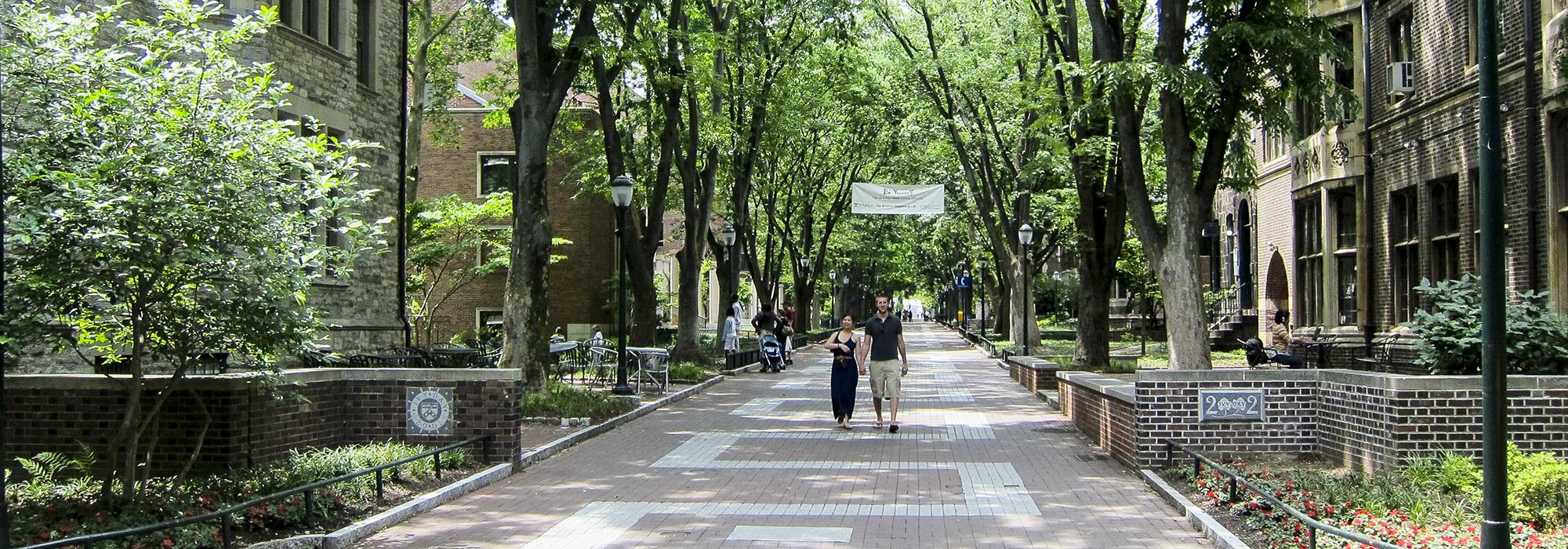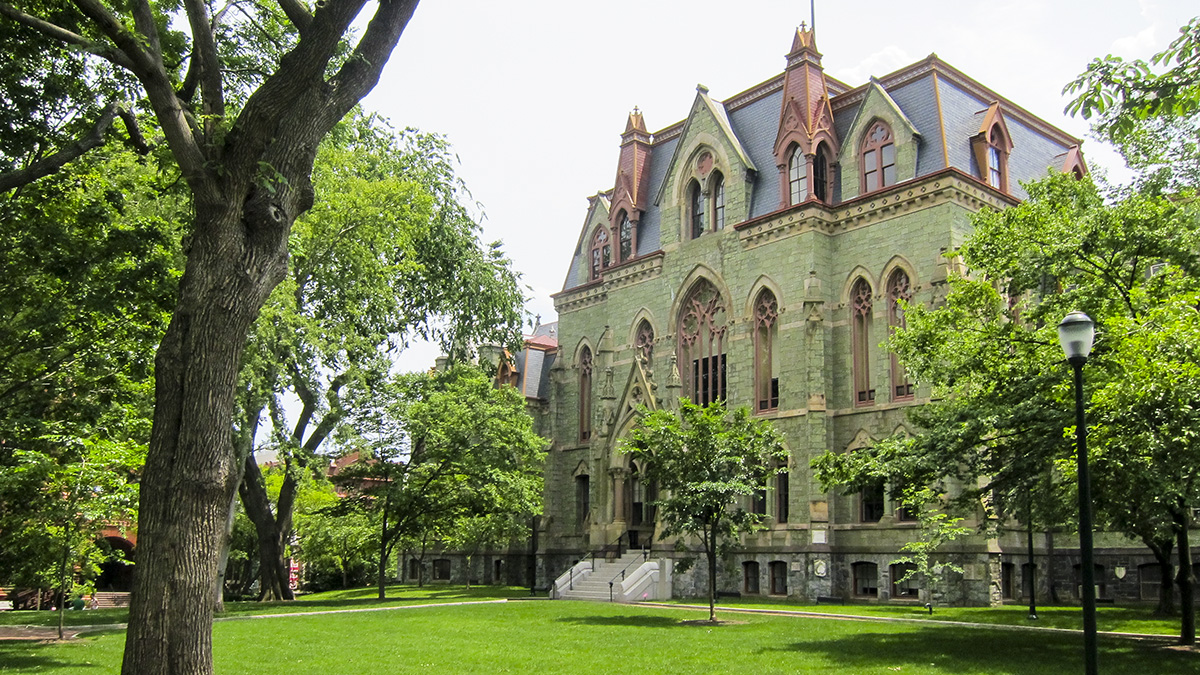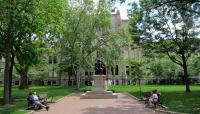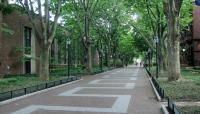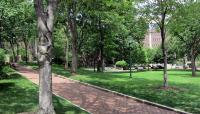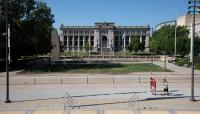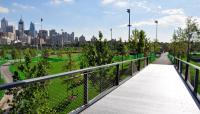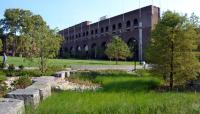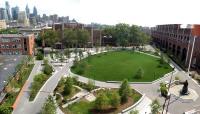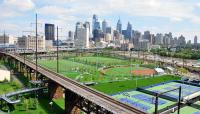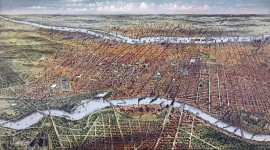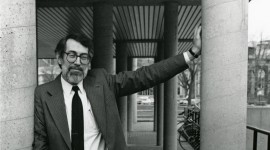Landscape Information
Founded in 1750 with the encouragement of Benjamin Franklin, the College of Philadelphia became the nation’s first university in 1779. It originally occupied the Philadelphia Charity School on Arch and 4th streets, but relocated to 9th and Chestnut streets in 1802. In 1872, university trustees purchased part of Andrew Hamilton’s estate, the Woodlands, and moved the school to its present site west of the Schuylkill River. The first buildings erected were College and Logan halls, designed by Thomas Webb Richards. The quadrangles of Collegiate Gothic-style buildings, designed by Cope & Stewardson between 1895 and the mid-1920s, define the campus’s dominant architectural character. In 1913 Paul Cret created the first Campus Plan, which featured a symmetrical ensemble of buildings sited along axes and surrounded by generous expanses of lawn.
Following World War II, the university expanded north and west into brick and concrete Modernist mid-rises. In 1957, George Patton transformed Locust Street into a brick-and-cobblestone pedestrian path. Lined with mature trees, it connects the western residential campus to the central core. The 1977 Landscape Development Plan by Peter Shepheard provided a coherent appearance to the sprawling urban campus while creating open spaces such as Levy Park. The Olin Partnership (now called OLIN) created a Campus Development Plan in 2001, which provides a framework for new development while strengthening physical links to the surrounding city. Today, the campus encompasses 300 acres with over 180 buildings and 100 acres of landscaped lawns, gardens, and athletic fields. In 1978, 117 acres were listed in the National Register of Historic Places.



